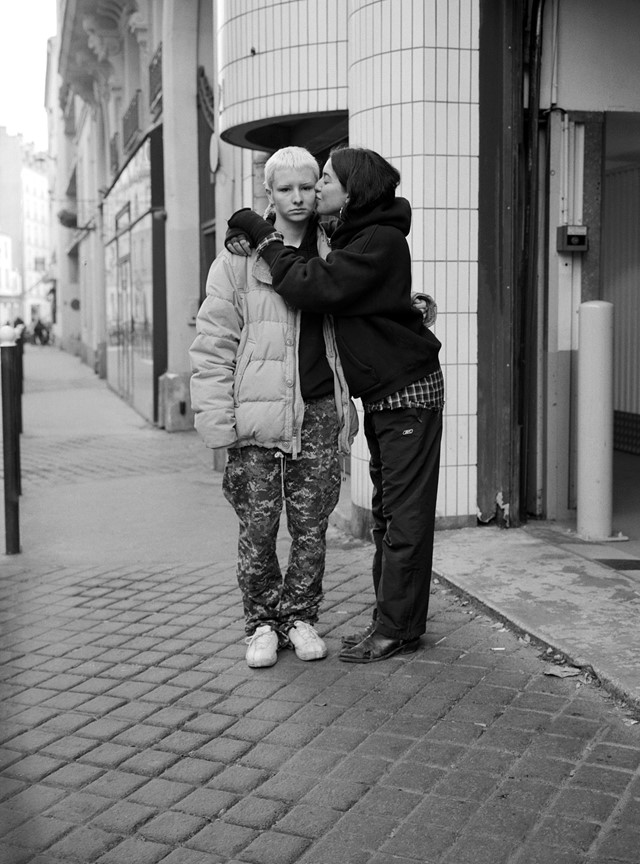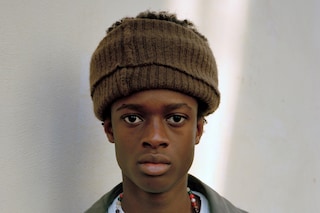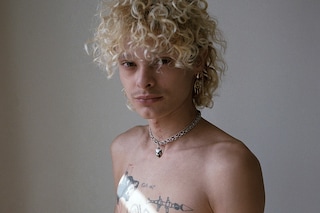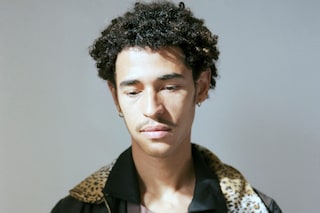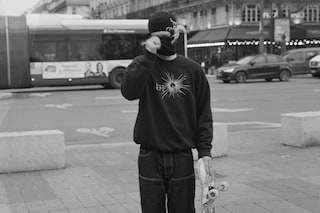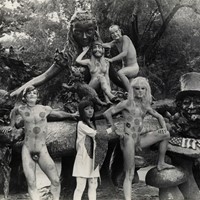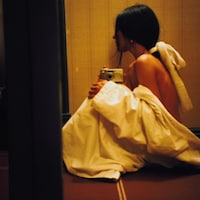Photographer Dan Boulton takes us on a trip to the French capital, documenting its young faces for his new book Paris Youth
The introduction for Dan Boulton’s new book Paris Youth opens with the short epigraph “La beauté est dans la rue”, which translates to “beauty is in the street”. For most Francophones, the phrase will ring familiar, but you’d be forgiven for the confusion if you reside on this side of the channel. The slogan was popularised during the events of May 1968, a period of civil unrest across France that led to seven weeks of demonstrations, general strikes and violent clashes. 55 years later, the streets are alight again, with youth across the country currently protesting a teenage boy’s death at the hands of police.
The introduction, written by the artist and photographer Nick Waplington, recounts the story of Waplington arriving in Paris some 50 years after those events, and being met with a similar scene. “As I walked around the city”, he recalls, “I was confronted by teenagers out on the streets fighting for their right to a decent education.” Although the police eventually arrived, the students remained obstinate and “continued to block major junctions throughout the city for the rest of the day, determined to demand their basic rights and freedoms no matter the cost.” While Paris Youth doesn’t document these demonstrations, it does offer us something much harder to capture – the quiet resilience once the placards are put down. As the events of May 68 would put it, la beauté est dans la rue.
It’s clear from the quality of Paris Youth that Boulton is no stranger to documenting youth culture. Previously, the British photographer has spent over a decade capturing the skaters of London’s Southbank, inspired by works such as Jim Goldberg’s Raised By Wolves. But while those previous photographs were documentary style, capturing split-second snapshots of a moving scene, the images in Paris Youth are altogether different. The majority of the photos are three-quarter portraits and close-ups, with the subjects sitting especially for Boulton, most staring defiantly into the barrel of the camera. Because of this, we are so much more aware of the role of Boulton as photographer, and of the youth as subjects, with their obvious connection pulling us into each photograph even further.
In the conversation below, Boulton explains how he builds this rapport with his subjects, why his status as an outsider works to his advantage, and why he chose Paris as the location for his first hardback book.

Hi Dan! Congratulations on the release of Paris Youth – what inspired you to start taking photographs for the book?
Dan Boulton: The idea for the book came just before Covid and the lockdowns. I’d already made some of the portraits before travel between the UK and France became difficult. The easing of travel restrictions meant I could continue, but I had to adapt to the frequent changes in border controls.
Initially, the interest came after shooting a bunch of Paris kids for a fashion story and just becoming obsessed with their lives beyond their modelling careers. I kept in touch on social media and the idea to shoot more came from that.
You’ve taken photographs in cities like San Francisco, LA, and your native London, so why Paris for your first hardback book?
Dan Boulton: The hardback format has been dictated by the work itself. Although it’s called Paris Youth, the emphasis is on the youth rather than the location. I did consider dropping ‘Paris’ from the title, but at the end of the day, the series of portraits were all shot in Paris. The reason for choosing to present this work as a hardback book was because the work is slightly more formal than previous work. The majority of the portraits were shot on my 6x9 camera which gives you the biggest negative before going up to large format cameras. The setups for the portraits were more staged than my usual approach which has mostly been documentary in the past.
There’s something a bit more serious about a hardback book. It gives the work more weight and requires you to spend more time on the images. So I think it mirrors how the work was produced.
Do you think your status as an outsider helped when engaging with Parisian youth?
Dan Boulton: It helped that I’m a lot older than the people I photograph. It maybe feels different than being photographed by your peers. I’m seeing something different. But the kids I’m working with have either heard of me already or contacted me themselves. At the beginning of a shoot, I’m very clear about what I want to achieve. I’ve been told that I come across as very genuine.
“I have to find [my subjects] interesting both visually and in person. It’s very immediate.” – Dan Boulton
How many people do you think you’ve taken photographs of for Paris Youth, even the ones that aren’t included?
Dan Boulton: Honestly there was a point where I lost track and I could probably do a second book at least with the ones that didn’t get included. I have boxes and boxes of negatives from this project.
I would go to Paris for a week at a time, staying at my friend’s apartment and just concentrating on meeting people and shooting them. Then as the work grew, if I was shooting anything in Paris, I tried to fit more people in or meet up again with some and shoot more.
What attracted you to a person or group when photographing them? Is there a common thread that all these subjects share?
Dan Boulton: I have to find them interesting both visually and in person. It’s very immediate. I have spoken before about seeing someone and thinking “fuck, you’re really cool”… that’s gonna be different for everybody. In some ways, I don’t want to overthink this and then become too conscious of why I choose who I do. That said it doesn’t always work out.
There were some that didn’t make it into the book because I didn’t get something from the interaction or something was missing from the photographs. You learn as a photographer that it doesn’t always work. The subject can be incredible, but on the day it just doesn’t fit, or something you thought would be there in the photos just doesn’t materialise.
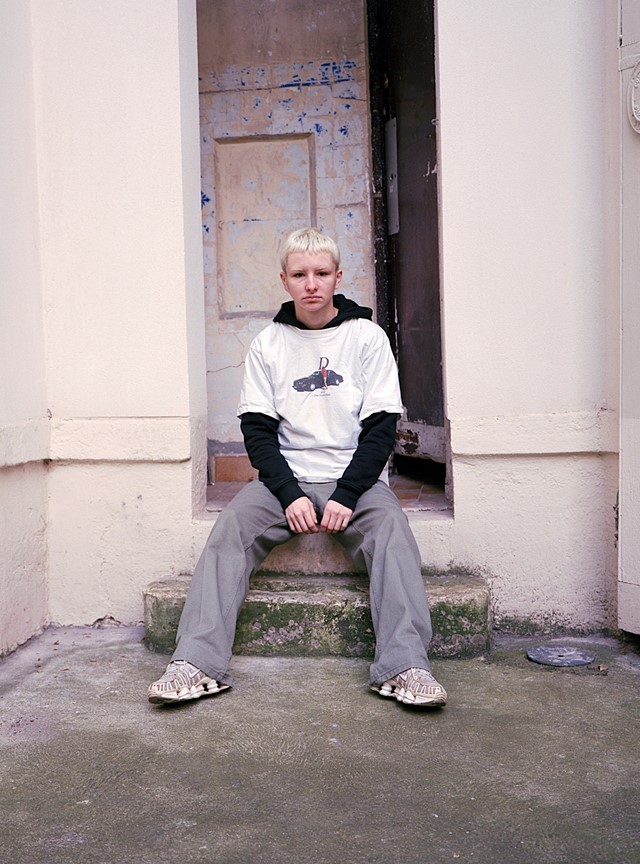
In what ways did you build a relationship with your subjects when shooting?
Dan Boulton: The majority of the kids in the book I am still in touch with. Some I have used for editorials and commercial shoots. I like to keep working with the same people and watching them grow. My photography comes from a place of genuine interest in people and their lives. A few of the subjects have become good friends despite the difference in age.
Do you have any plans to continue the series?
Dan Boulton: I will always be shooting youth in one way or another, but don’t want to do ‘New York Youth’, or ‘Milan Youth’, etc, etc. That said, I do want to continue to explore this more considered style of making portraits. Maybe based on a connection other than location, and probably more sub-culture-based.
Join Dazed Club and be part of our world! You get exclusive access to events, parties, festivals and our editors, as well as a free subscription to Dazed for a year. Join for £5/month today.
